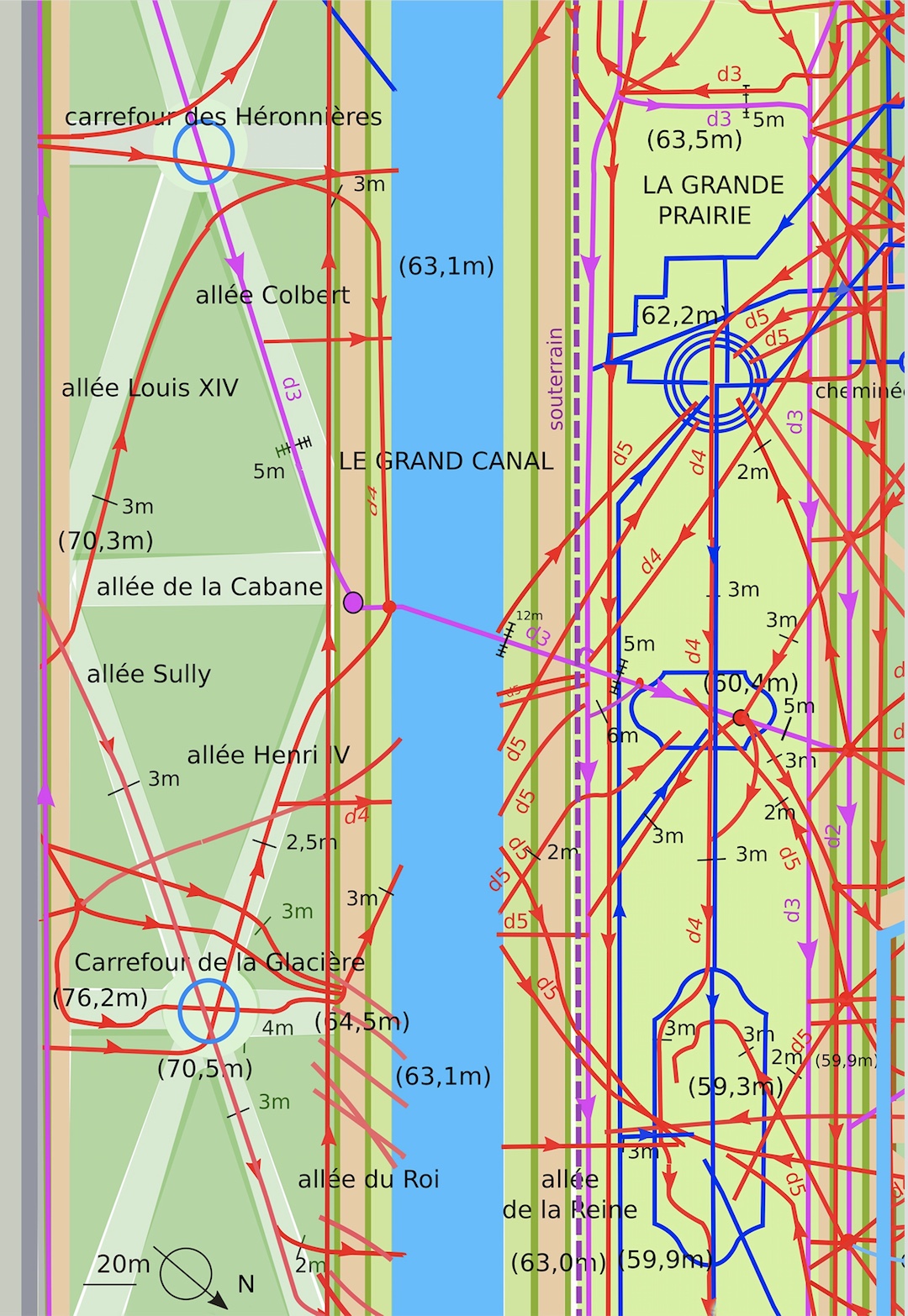
1: sandstone blocks, including orthostats (named by the location of their highest point), wedging blocks, transverse alignments of small slabs 2: pit edge 3: native rock (Cretaceous). Plan of the megalithic alignment at La Chaussée-Tirancourt after excavation (from Leclerc and Masset, 2006). Reasoning by analogy, we are strongly tempted to speculate that similar lightweight roofs existed on the other megalithic monuments we have studied. The later alterations, described below, have erased all traces of how the roof was installed. As we shall see further on, the megalithic slabs covering the monument were placed at a later date and were not present at the time of its use as a tomb. Given the technical possibilities of the time, this could have been a single or double-pitched roof, covered with thatch or perhaps shingles. The good condition of the bone material indicates an absence of weathering due to the presence of stagnant water or recurrent contact with it (Masset and Leclerc, 2006), which means that the monument must have originally had a watertight cover. The pit at Méréaucourt was dug in impermeable flinty clay, so that water collects at the bottom even after the slightest rain. They are called "buried" because they stand at the bottom of a pit, which is a little deeper than the height of the orthostats. La Chaussée-Tirancourt and Méréaucourt (Claude Masset excavations) OriginsĦ Both at La Chaussée-Tirancourt (figure 2) and Méréaucourt (figure 3), these are "buried" megalithic alignments. Résultats des datations par le radiocarbone effectuées sur les sites étudiés Resultsĥ Our results are grouped by excavation team (Claude Masset, then Dominique Jagu). Results of radiocarbon dating at the study sites | These different monuments were excavated in the same way using the "wide horizontal stripping" method introduced by André Leroi-Gourhan in the 1960s. Also in the Eure-et-Loir, in the municipality of Yermenonville and 3300 m from Changé as the crow flies, a partly destroyed dolmen, known as La Pierre Fritte, was investigated in 1928 and again between 20 (Jagu et al., 2008 Jagu and Fouriaux, 2014). For ease of reference, we will refer here to the "Changé dolmens" (see The site was excavated in 1924, and again between 19 (Jagu and Renaud, 1991 Jagu, 1994 Renaud, 1996 Jagu et al., 1998). Both are located in the Changé hamlet belonging to the municipality of Saint-Piat. Again in the north of France, in the Eure-et-Loir département, a dolmen (known as the Petit dolmen), located under a later tumulus and which had earlier lost its megalithic cover, stood less than 2 m away from another dolmen known as the Berceau, which is well known for its engravings. A covered alignment at Méréaucourt (Somme), contemporary to the first and about 30 km distant from it, was excavated between 19 (Masset et al., 2013 Blin, 2018). At La Chaussée-Tirancourt (Somme), an uncovered megalithic alignment, erected in the 2 nd half of the 4 th millennium BC (table 1), was excavated between 19 (Leclerc and Masset, 2006). Materials and methodsģ Five sites were studied (figure 1). Careful excavations over one or two decades have yielded so far unpublished information, a summary of which is presented here (see also Jagu and Masset, 2016).

The monuments discussed below were partly spared from this lethal curiosity furthermore, the human remains that had once been placed within them were fairly well preserved. Most excavations of these monuments have been brutal, so that the information they might have contained has largely disappeared forever. Les fouilles préhistoriques – technique et méthodes IntroductionĢ Standing stones, dolmens and other ancient monuments built of huge stones have long attracted the interest of researchers, but this interest has often been damaging to them. Top of pageġ La connaissance de l’homme fossile appartient au fouilleur patient Fermés pour toujours, ces mégalithes restèrent longtemps fréquentés, jusqu’à ce qu’intervienne une seconde "condamnation", d’un caractère cette fois franchement destructeur quoique monumental, associée à un abandon définitif.

Dans deux de ces sites, il a pu être montré que de lourdes "dalles de couverture" n’y furent introduites qu’après la fin des dépôts sépulcraux, dans un geste de fermeture définitive : avant leur mise en place n’avait existé qu’une couverture légère, imperméable à l’eau.

Il pouvait arriver qu’une couche d’ossements ait été presque entièrement éliminée dès cette époque. Inhumations primaires ou secondaires pouvaient s’y mêler, ou encore s’y succéder en liaison avec les susdites "sous-couches". L’utilisation sépulcrale y a connu des temps d’arrêt, associés ou non à la mise en place de "sous-couches" généralement minces, mais parfois assez épaisses. Dans cinq monuments mégalithiques du Bassin Parisien, intervinrent dès le Néolithique des remaniements de grande ampleur, incluant des déplacements et des extractions d’orthostates.


 0 kommentar(er)
0 kommentar(er)
